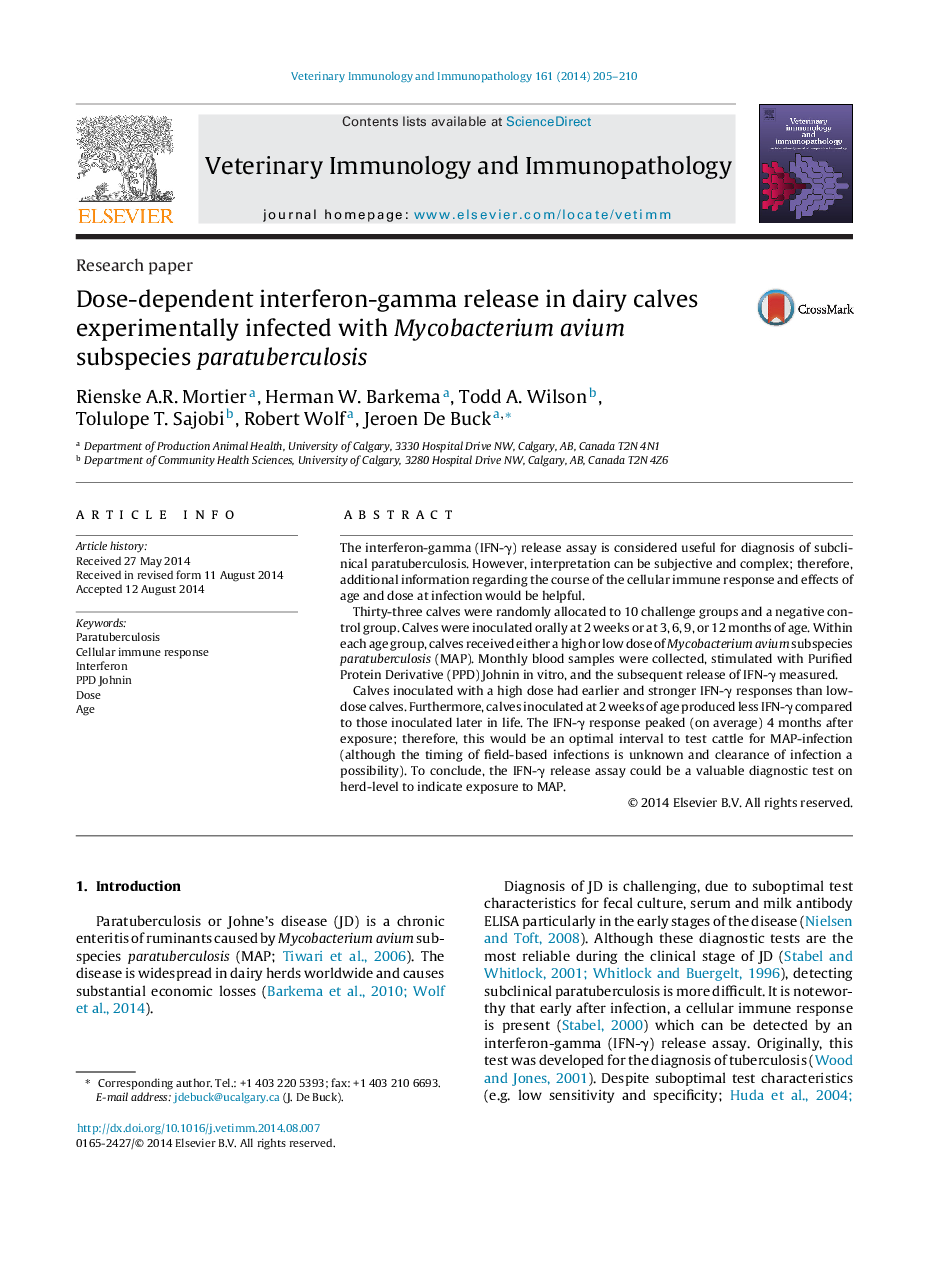| Article ID | Journal | Published Year | Pages | File Type |
|---|---|---|---|---|
| 2461507 | Veterinary Immunology and Immunopathology | 2014 | 6 Pages |
The interferon-gamma (IFN-γ) release assay is considered useful for diagnosis of subclinical paratuberculosis. However, interpretation can be subjective and complex; therefore, additional information regarding the course of the cellular immune response and effects of age and dose at infection would be helpful.Thirty-three calves were randomly allocated to 10 challenge groups and a negative control group. Calves were inoculated orally at 2 weeks or at 3, 6, 9, or 12 months of age. Within each age group, calves received either a high or low dose of Mycobacterium avium subspecies paratuberculosis (MAP). Monthly blood samples were collected, stimulated with Purified Protein Derivative (PPD) Johnin in vitro, and the subsequent release of IFN-γ measured.Calves inoculated with a high dose had earlier and stronger IFN-γ responses than low-dose calves. Furthermore, calves inoculated at 2 weeks of age produced less IFN-γ compared to those inoculated later in life. The IFN-γ response peaked (on average) 4 months after exposure; therefore, this would be an optimal interval to test cattle for MAP-infection (although the timing of field-based infections is unknown and clearance of infection a possibility). To conclude, the IFN-γ release assay could be a valuable diagnostic test on herd-level to indicate exposure to MAP.
